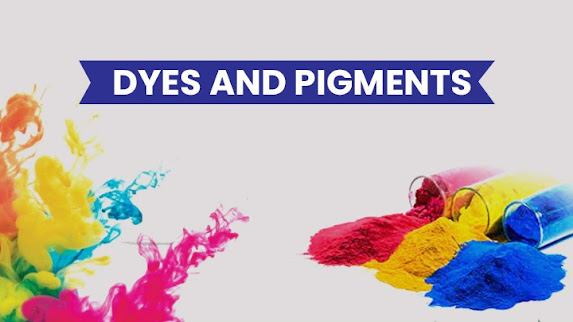Stripping and topping are two important processes in the textile industry used to modify the colour of the fabric after it has been dyed. Sulphur Dyes Manufacturer in India, Stripping refers to the removal of colour from the fabric while topping involves adding a new colour to the fabric. In the case of sulphur dyes, stripping and topping are often necessary to achieve the desired colour and shade.
Stripping Processes for Sulphur Dyes:
The stripping of sulphur dyes can be accomplished by using reducing agents such as sodium hydrosulfite or sodium bisulfite, which convert the insoluble dye back into a soluble form that can be removed from the fabric. The process is carried out at a high temperature and under alkaline conditions. This allows the reducing agent to break down the dye molecule and make it soluble, which can then be removed from the fabric by washing. The stripping process is usually followed by a thorough rinsing and washing of the fabric to remove any residual chemicals and dyes.
Topping of sulphur dyes manufacturers involves adding a new colour to the fabric, which can be achieved by applying a new dye on top of the existing one. This process is often used to modify the colour of the fabric or to add depth to the existing colour. Topping can be done by applying a new dye in a different colour, or by using a combination of dyes to create a multicoloured effect.
Before the topping process, the fabric is usually stripped to remove any residual dye that might interfere with the new colour. The fabric is then dyed using the desired colour, and the process is followed by thorough rinsing and washing to remove any excess dye.
Stripping and topping are important processes in the textile industry used to modify the colour of the fabric. Dye Manufacturers in India produced Sulphur dyes, which are commonly used for cotton and linen, can be stripped using reducing agents and topped with a new colour to achieve the desired shade. These processes require careful consideration and expertise to ensure that the fabric is not damaged during the process.
Effective Methods for Stripping Sulphur Dyes:
It is possible to correct unevenly dyed shades on cellulosic materials with sulphur dyes using various methods. One such method is to treat the material with a warm solution of Na2S in the presence of Albigen A (polyvinyl pyrolodine). This can help to even out the shade and improve the overall appearance of the fabric.
If this method does not work, then the fabric can be treated with a solution of NaOCl or bleaching powder (2-3 gm/Litre of available chlorine). This method can help to remove the excess dye and correct any unevenness in the shade.
In some cases, bleaching with KMnO4 solution may be effective. This method involves treating the dyed material with a solution of potassium permanganate, which can help to break down the dye molecules and remove the excess colour.
Alternatively, the fabric can be treated with a warm NaOCl solution in the presence of NaOH. This method can help to bleach the fabric and even out the colour.
One such method involves treating the dyed fabric in a blank bath containing 6 g per litre sodium sulphide at high temperatures.
Another method involves using a blank dye bath at 90–95°C containing 4.5–9 g per litre sodium hydrosulphite and 2–3 ml per litre sequestering agent. This method can strip about 10–20% of the colour, and further removal of colour can be achieved by adding a stripping agent such as polyvinyl pyrrolidine.
DA-BS800 is another stripping agent that can be used to remove sulphur dyes from the fabric. The stripping process typically involves treating the fabric in a bath of sodium hydroxide and sodium hydrosulfite. It is important to note that sulphur dyes and vat dyes have similar stripping methods and application rules.
It is important to note that these methods should be used with caution and under the guidance of a professional to avoid damaging the fabric. Also, the effectiveness of these methods may vary depending on the type of fabric and the specific dye used.
Topping Techniques for Sulphur Dyes:
It is possible to top Sulphur dyes with basic dyes to brighten the shades of cotton textile materials. This process involves washing the fabric thoroughly to remove any alkali and then treating it with a basic dye in a second dye bath containing acetic acid or alum. The temperature is raised to about 60°C to control the exhaustion of the basic dye.
Topping Sulphur dyes can be an effective way to obtain brighter shades and achieve the desired colour. It can also help to minimize the cost of Aniline Black and Indigo Blue, as Sulphur dyes can be used as a mordant for these dyes.
It is important to note that the choice of basic dye and the topping process should be carefully selected based on the specific fabric and dye used to achieve the desired results.
Conclusion
The demand for eco-friendly dyes has increased significantly in recent years, leading many dye manufacturers in India to invest in research and development to create sustainable dyeing solutions. Veeraco Colorants Private Limited is one of them. They are one of the top dyes manufacturers in India having a reputation for producing high-quality products that are used in a wide range of applications, including automotive coatings and fibre masterbatch. They offer a diverse range of products, including acid dyes, reactive dyes, solvent dyes, and pigment dispersions. Their products are designed to provide excellent colour consistency, brightness, and colour fastness, even in challenging applications.



